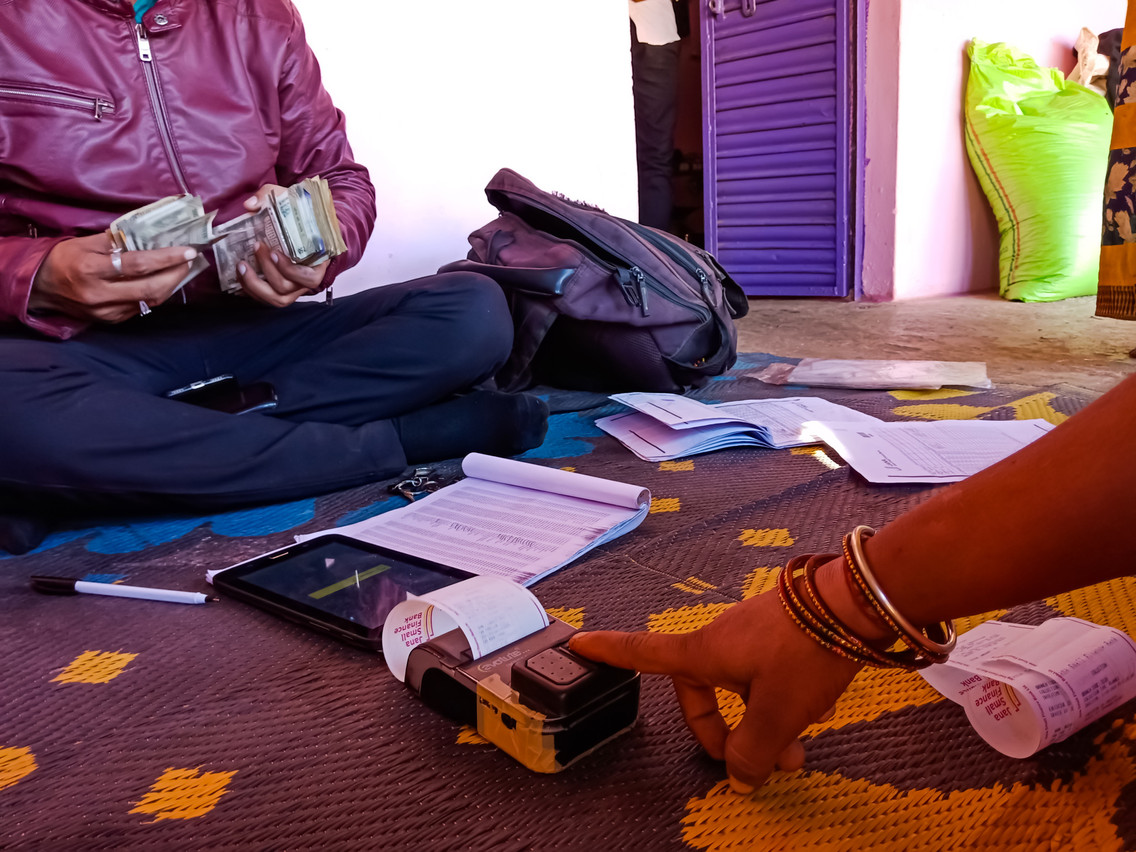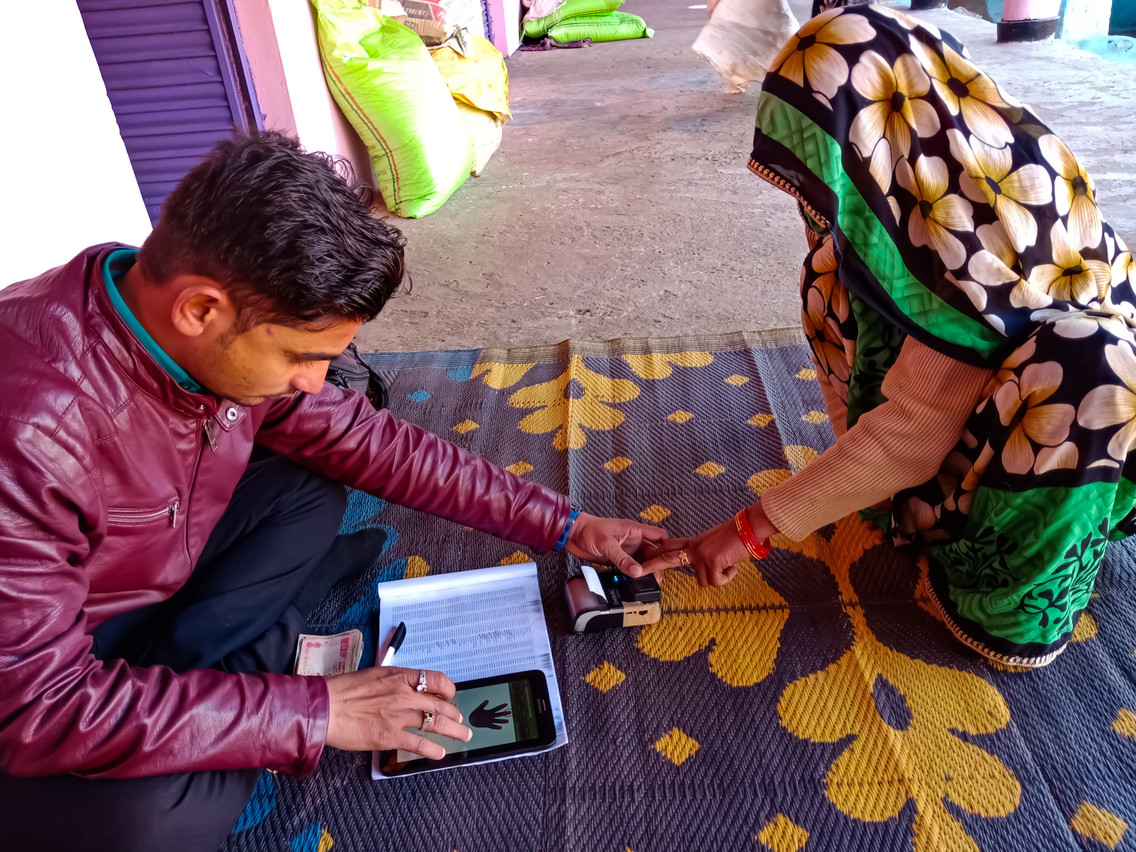Lisa Christl: What does a responsible digital finance ecosystem mean?
Jurgen Hammer: If I must summarise it in one sentence: It means that it has real value for the client, it has to protect him.
What does it need in order to be responsible?
It needs to address the risks. Let’s take a step back. Microfinance comes with two big challenges. One is the challenge of distance. There are billions of people in the world who live far away from any possible physical point of a bank. For those people, it is very difficult to reach finance. Even microfinance organisations are very much concentrated in rural areas. And the second one is that it’s an informal sector. People in the global South don’t necessarily have documents of their activities, but everybody has a mobile phone. On the phone there is information that can be used for profiling. Digitalisation was a fantastic opportunity, but unfortunately, that did come with a lot of risks that in many cases we didn’t see in the beginning.
There were many cases of over indebtedness in microfinance. And unfortunately, the focus is often on those cases and to show the things that hadn’t worked.
Which risks in the digital environment are you referring to?
Cybersecurity is a big issue, algorithms--but that’s not just for inclusive finances, that is a topic for the financial sector in general. Data rights is also a topic in microfinance--data can be used for fraud. In Europe, we are largely protected by what a provider can do with the data he is getting from us. In the global South, this is very often not the case.
Indebtedness is a big topic as well. Over-indebtedness and pricing as risks over indebtedness. What I mean is, banks normally have very strict conditions on what they can lend, they determine your repayment capacity. They see how much income you have, your tax declarations, your costs, and they see how much you can make, and then they calculate what your maximum loan capacity is.
What digitalisation brings is a totally new distribution channel.
For fintech and digital financial services, this is much less the case because often we don’t have balance sheets and income statements, and it is an estimation based on your psychological profile. There were many cases of over-indebtedness in microfinance. And unfortunately, the focus is often on those cases and to show the things that hadn’t worked.
Are there regulations or standards that regulate digital microfinance?
We have been working on a sector-wide coordination to create standards because standards are necessary. They are the only way to assure that an organisation or financial organisations integrate and monitor risks. And you need to have a certain language with standards.
I would say traditional microfinance has been working to complement those standards with standards for responsible digital financial services. We don’t have to start from zero because it’s still a financial service.
So many of the concepts that we have already agreed upon in the industry, of what responsible finance is, governance products and so on, are still valid, but they need to be seen under the specific lights of the digital distribution channel. What digitalisation brings is a totally new distribution channel.

Jurgen Hammer, managing director of the Social Performance Task Force in Europe, explains that the sector works on creating standards for digital microfinance. Photo: Jurgen Hammer
And what are these complementary standards you mentioned?
We need standards in digital finance systems because we need transparency in evaluation and reporting to make sure that we can identify good and less good performers. There is no transparency without the existence and usage of standards. Financial accounting with international financial reporting standards is the best example.
Microfinance has been in self-regulation for over 20 years. Having standards committing to use and implement them makes it more transparent. So many of the organisations said that we must demonstrate that. The big change came 4/5 years ago with the European Commission disclosure regulations.
[The Social Performance Task Force drafted guidelines], for example on cybersecurity, agent management and data rights. We also work a lot with AFI [the Alliance for Financial Inclusion], to share economy experiences, because at some point regulation is necessary.
Read also
You said earlier that digitalisation was a fantastic opportunity, but that it came with risks you didn’t see from the start. What was the expectation of digital microfinance in the beginning?
Microcredit is often criticised for having relatively high interest rates. And the reason for that is simply a cost issue. What we had hoped in the beginning was that digitalisation will bring prices down, because there’s less cost, and what we saw was the opposite. And why? Because economic companies search for maximising profits. Why should they bring their prices down?
Is this responsible then?
No, of course not. That’s why we are doing those standards for responsibility.
We talked a lot about the risks of digital microfinance. Let’s have a look at the positive effects. You mentioned distance and the time-consuming aspects. But what are other positive effects that we see with the digitisation of microfinance?
It’s the fact that it allows us to access populations who don’t live in big city centres, and it has certainly the potential to democratise access if it is well done. Basically, everybody who has a phone can get in contact with an organisation. So you’re reaching more people. It’s certainly also the capability to evaluate a person’s profile, repayment profile and capacity.
I think (digitalisation) is a great access, not only for the client or financial service, it’s also great access to business opportunity.
Does the digitalisation give the global South more responsibility than before in finance?
Yes, I think so. More responsibility and more accessibility. More, more, more flexibility and creativity.
We have a training programme with Lhoft here in Luxembourg called to understand aspects of responsible development of financial services. We teach young people from Africa in fintech projects. And that’s really fantastic to see. I’m surprised, amazed, impressed by the creativity of these professional people from these different countries.
When I look at these examples, I think (digitalisation) is a great access, not only for the client or financial service, it’s also great access to business opportunity. All you need is going on the internet and understanding what’s a good business.

“Microcredit is often criticised for having relatively high interest rates,” says Jurgen Hammer of the Social Performance Task Force in Europe. Photo: Shutterstock
One last question, to sum up. Who bears responsibility in digital microfinance?
Everyone in the chain. It’s the organisation in the country that provides a service who has a contract with the client. The investor by deciding to rather take the service or not and by implementing and making sure that it’s done responsibly. Also, development banks and donors by selecting the funds, the asset managers that support and invest have a responsibility. It needs to be assured that the select asset managers are not just about growth, but also about responsible growth. Even the regulators bear responsibilities.
Updated to correctly identify the Alliance for Financial Inclusion



